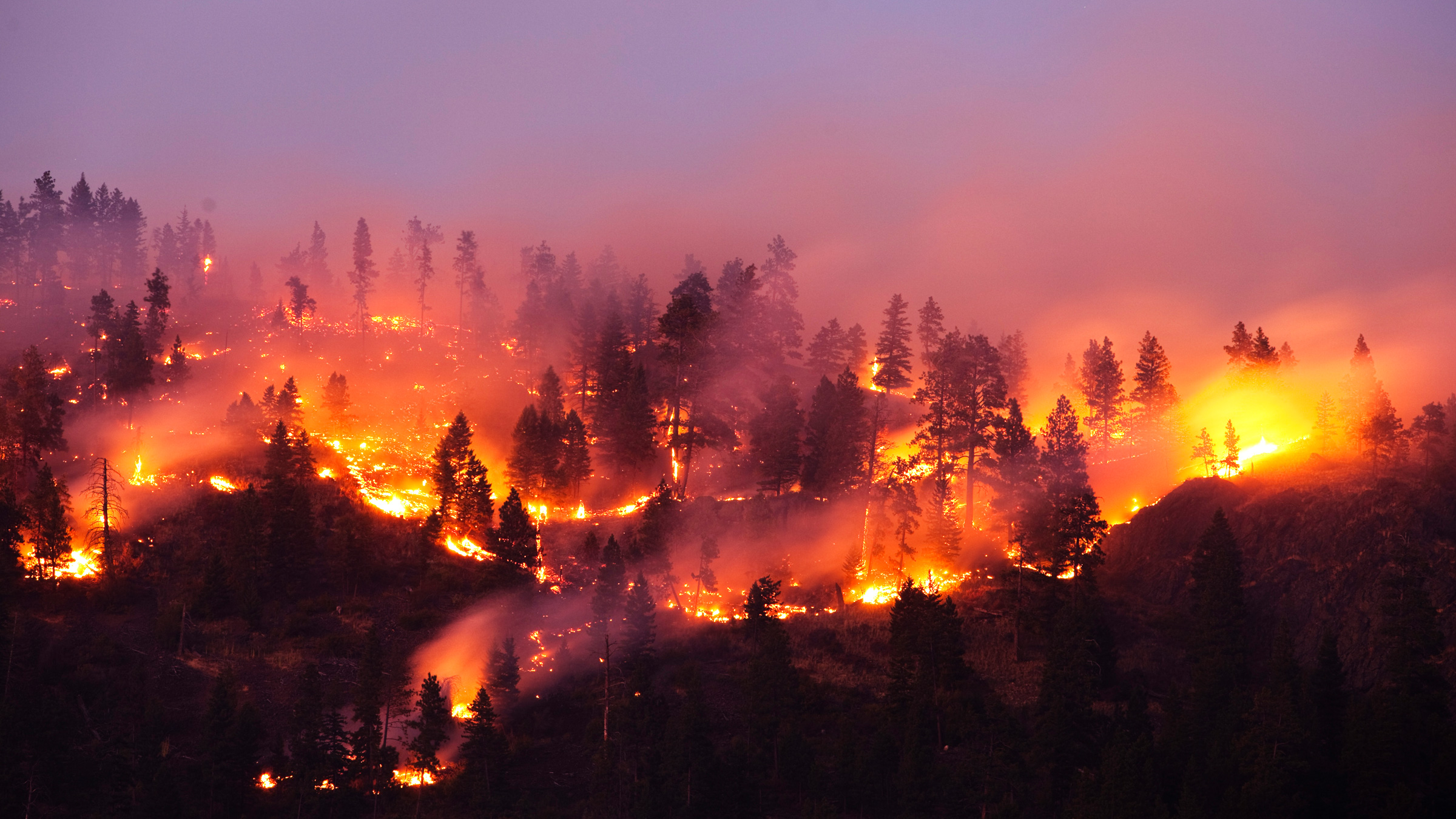Enough snow for snowmobiling finally arrived in the Cloquet Valley in northeastern Minnesota at the end of January, to the relief of Nick Alexander.
He and his brother own the Pequaywan Inn, a popular stop along the snowmobile trails running through the area’s thick forests.
When snow is plentiful, half of the business’s annual revenue can come from the winter months, according to Alexander. But there was hardly any snow in 2024 and much of this past January. “It’s very hard to totally replace that type of revenue. When you think about a business like mine with gas, food, lodging, and snowmobile rentals, the snow is what fuels all of them.”
Snow activities, mainly snowmobiling, downhill skiing, and snowboarding, are among the most popular forms of winter recreation in Ninth District states. For remote areas with fewer economic activities, these activities also bring in welcome tourism dollars at a time of year when the local economy is often slower.
“There are a lot of communities up here that rely more heavily on tourism,” said Natalie Chin, a tourism expert at the University of Wisconsin–Madison’s office in Superior. The lack of snow last winter cost tourism businesses in seven Northwoods counties $6.5 million in lost revenue. While that’s not much compared with the billions in tourism revenue statewide, she said, “for the communities up here, where tourism is a lifeblood, that can have a significant impact.”
Since the pandemic, interest in snow and outdoor activities has increased, industry experts say. But this increase has been tempered by inconsistent snow and cold throughout the Ninth District.
Ups and downs of snow activities
In the past decade, participation in snowmobiling, downhill skiing, and snowboarding has fluctuated in district states. Those ups and downs can be seen in the number of visits to ski areas and snowmobiles registered (figures 1 and 2).
Snow and cold, or their absence, have been among the key drivers for Midwestern ski areas. For example, participation fell in the lackluster winters of 2016 and 2017 but rose during the snowy winters of 2018 and 2019.
“When there’s snow, skiing does well. When there’s not snow, ski areas definitely feel the challenge,” said Bo Bigelow, executive director of the Midwest Ski Areas Association.
Since the pandemic, increased interest in outdoor recreation has made participation especially strong during snowy winters, like in 2021. But that enthusiasm did little for skiing and snowmobiling during brown winters, as in 2024. The historically warm weather caused ski visits to fall to their lowest levels since 1979, when the National Ski Areas Association (NSAA) began keeping records. Most Midwestern ski areas are in Ninth District states.
Visits to ski areas in Montana, the only district state in NSAA’s Rockies region, had been rising for decades. Since the pandemic, this region has become even more popular, helping to propel ski participation to record highs nationwide. But they, too, received fewer visitors in winter 2024 (Figure 3).
Snowmobile registrations in Ninth District states, which account for more than half of all registrations nationwide, also increased with the pandemic and decreased in winter 2024, according to industry and state data. Registrations are less responsive to annual weather trends, however, because registrations are valid for more than one year in most district states.
Both the skiing and snowmobiling industries are hoping for a rebound this year, fueled by continued interest from the pandemic.
The number of people who tried snowmobiling for the first time was a good sign for the industry, according to Jaret Smith, president of the International Snowmobile Manufacturers Association (ISMA). “We’re optimistic—as those people share their experiences—that we can continue to grow with some good snow years and positive economic conditions.”
Inconsistent winter weather
Inconsistent winters are nothing new for longtime skiers and snowmobilers.
Scott Wakefield, at-large director at the Minnesota United Snowmobilers Association, said he still remembers how idle his snowmobile was during the brown winter of 1980.
But poor winters seem more common in recent years, he said. “If we could get more strong La Niñas more often and for longer periods of time, we would be in seventh heaven,” he said, referring to the cyclical weather pattern associated with cold, snowy winters. “But that trend has not been the same, has not been consistent.”
Wakefield maintains snowmobile trails just west of Minneapolis with his snowmobile club. Above-average temperatures have become more common in the area in the past 25 years, based on averages going back to 1950, according to the National Centers for Environmental Information. That trend is seen throughout the Upper Midwest and Northern Rockies and Plains regions, where Ninth District states are located.
Above-average precipitation is also more common in these regions, but warmer temperatures mean it’s more likely to come down as snow-melting rain.
The need for snow and cold
To reduce reliance on weather, nearly all ski areas today use snowmaking equipment. This technology is a necessity in low-lying areas like the Midwest. But, even in the mountains, snow is not guaranteed. The 2023–2024 season, for example, was a tough one for many Montana ski areas.
Snowmaking can be a significant expense, and during warm winters, it must be done more often. Paradoxically, warm winters also have fewer suitable days for snowmaking. Most snowmaking machines lack refrigeration and won’t function properly in temperatures warmer than 28 degrees Fahrenheit.
Snowmobiling requires both natural snow and cold, according to Smith. The ground needs to freeze to provide a strong foundation so trails can withstand snowmobile treads and resist thawing. Snow is needed because snowmaking over thousands of miles of trail is impractical.
But snowmobilers and skiers need snow in another way: Many need snow in their backyard to put them in the mood for snow recreation. This “backyard effect” has been observed by industry experts and confirmed by sociologists. Brown backyards mean snow activity businesses must work harder on marketing.
Coping with change
Despite the challenge of inconsistent winters, ski areas have proven resilient. The number of Midwestern ski areas has changed little in a decade, with 117 open as of winter 2024, according to NSAA.
Snowmaking is difficult but still viable, and many ski-area operators are optimistic, according to Chin. “A lot of these places saw a strong boost because of the pandemic.”
Snowmobile trail networks in the Upper Midwest have also remained robust over the years. Minnesota, Wisconsin, and Michigan alone boast 52,000 miles of interconnected trails, amounting to a third of the U.S. total. That dense network has kept snowmobiling activities and sales concentrated in the region.
But trails are maintained primarily by volunteers from snowmobile clubs, and many struggle with recruitment. The reasons for this varies, but one is inconsistent snow, which dampens enthusiasm for the sport. A decade ago, Wakefield said, Minnesota clubs had 24,000 members. At last count, there were just 10,000.
For many businesses reliant on snow activities, diversifying has become an important strategy for survival.
At the Pequaywan Inn, the Alexander brothers are considering adding all-terrain vehicles to their fleet of rental snowmobiles, because ATVs can be used for many more months than snowmobiles can. Nick Alexander said, “I don’t want the business being able to make it or break it based off of winter.”
Tu-Uyen Tran is the senior writer in the Minneapolis Fed’s Public Affairs department. He specializes in deeply reported, data-driven articles. Before joining the Bank in 2018, Tu-Uyen was an editor and reporter in Fargo, Grand Forks, and Seattle.






